With a little TLC, you can prevent and treat dry, chapped hands whether they are dry from winter weather or frequent handwashing. Here’s how to keep your hands healthy all winter long.
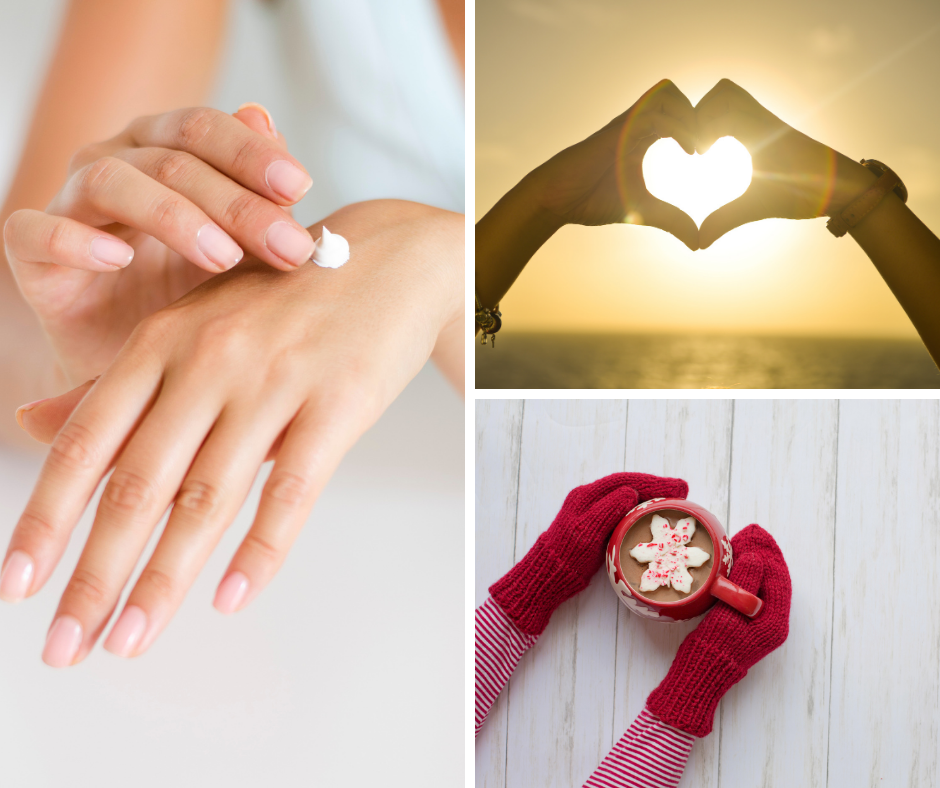
Dry air, central heating, hard water, and frequent handwashing can dry out your skin, so it’s important to be proactive and care for your hands before they get chapped (or even worse, cracked). If your skin is already dry and chapped, never fear, these tips will have your skin hydrated and happy in just a few days.
Disclosures: 1. I am not a medical professional. If you have cracks or bumps on your skin that will not heal or are very itchy / painful, please consult your family physician. 2. This story contains affiliate links through which I may earn a small commission at no extra cost to you. Thank you for supporting our small family business!
Table of Contents
Daily Skin Care for Dry Hands
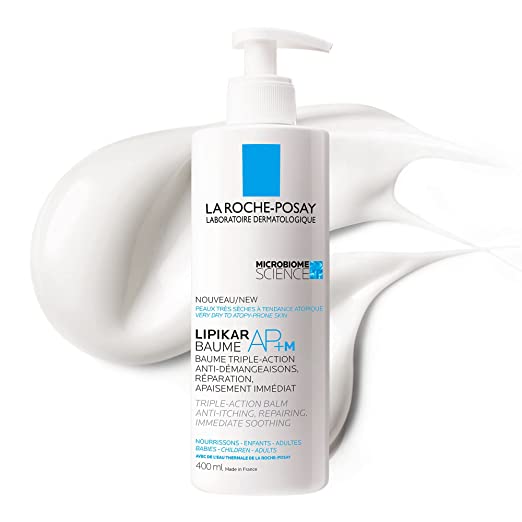
First of all, you have to moisturize frequently with an unscented lotion or cream. We keep a pump bottle of lotion at every sink so it’s easy to apply lotion after washing our hands. While creams provide more moisture and a better barrier, they are greasy, so we reserve them for use before bed. Try Cetaphil PRO Restoraderm Eczema Soothing Moisturizer (with ceramides, oats, and filaggrin) or La Roche-Posay Lipikar Balm AP+ Moisturizer (contains shea butter and glycerin). Both lotions are fragrance free, paraben free, and dermatologist recommended – even for eczema-prone skin!
Additional tips on preventing dry, chapped hands:
- Best practice for hand washing to prevent dry skin: Wash your hands with warm water (hot water will dry out your skin) and opt for paper towels instead of the hand dryer. Pat your hands dry and apply lotion immediately.
- Choose unscented soap, lotion, and hand sanitizer (this one has hyaluronic acid to prevent dry skin) to prevent skin irritation. Dry skin is more sensitive.
- Wear rubber gloves (or latex free gloves if you’re allergic to latex) when washing dishes or doing chores.
- Wear gloves or mittens when you’re outside. Dry, cold air sucks moisture from your skin.
- Use humidifiers in your bedroom and office (wherever you spend the most time). This Honeywell Cool Mist Humidifier is affordable and suitable for a small room. For larger rooms and less frequent water tank filling, try this model.
Night Treatment for Chapped Hands
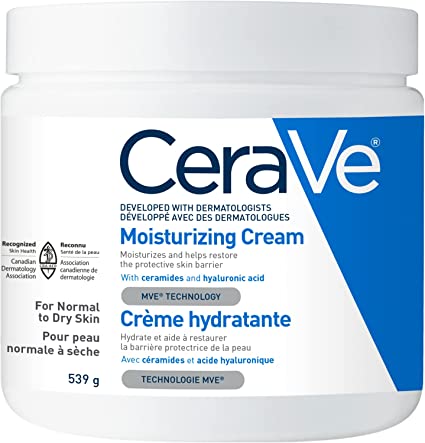
Moisturizing throughout the day helps protect your skin, but you’ll reap even more benefits from a good night routine. Several doctors have recommended the same skin care regime for my children’s eczema, my thyroid condition, and my late husband’s cancer treatments: Before going to bed, apply CeraVe Moisturizing Cream to your dry, chapped hands. Give it a few minutes to sink in, then apply a layer of Glaxal Base over top to lock in the moisture. These creams are fragrance-free, paraben-free, and extremely moisturizing.
If you’re worried about getting cream on your bedding, 1) apply Cerave and Glaxal about half an hour before bed, or 2) wear cotton gloves to sleep. When you wake up, you’ll be amazed at how smooth your hands are! When my kids get dry, chapped hands, I get them to do this night treatment and after 1-2 nights, their hands are better. This night treatment also works wonders on feet! ***If your child is sensitive and doesn’t like greasy creams, treat your child’s hands after she has fallen asleep. 😉 ***
Why does it work? CeraVe contains ceramides (lipids found in your skin) which help maintain your skin barrier, and hyaluronic acid which binds to water to help retain moisture. To get the most benefit from hyaluronic acid, apply CeraVe to damp skin. Glaxal Base is moisturizing too, but in this one-two punch, its greasy emollients act like a barrier to keep your skin from drying out.
Since both of these creams are a bit pricey, to keep the cost down, you could replace the Glaxal Base with items you already have in your pantry or medicine cabinet: coconut oil, cocoa butter, shea butter, lanolin (avoid if you’re allergic to wool), Bag Balm (contains lanolin), Vaseline (made of petrolatum, the main ingredient in Glaxal Base), or O’Keeffe’s Working Hands Hand Cream. These options very greasy, so I recommend wearing cotton gloves.
Treating Cracked Skin on Hands
Please contact your family doctor if the cracks in your hands are red, swollen, oozing pus, or are hot to the touch. These are signs of infection.
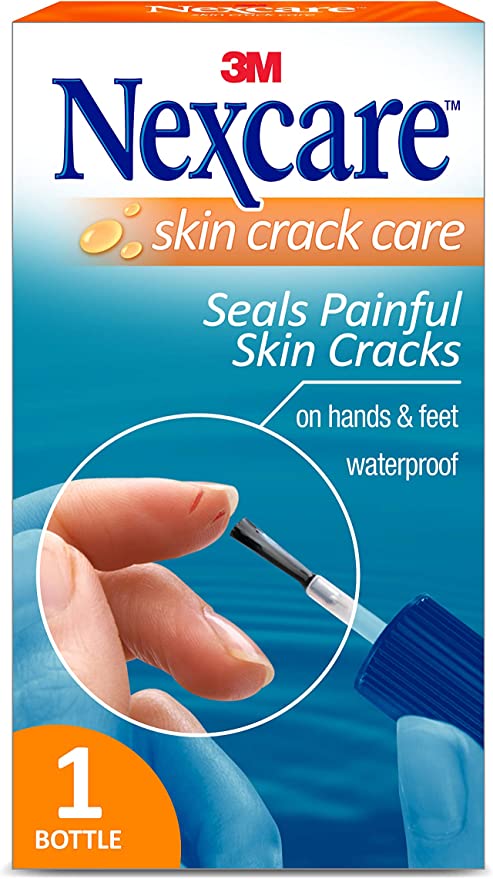
If you get cracks in your hands, it’s important to keep them clean and dry so they can heal. Keeping them clean and covered will also prevent infection. Since your hands are constantly moving and frequently wet from washing, seal hand cracks -with waterproof liquid skin bandage. Liquid bandage will not get wet and fall off like a bandage, and by keeping cracks closed, it will allow them to heal faster.
To treat skin cracks on hands, clean them well, dab with a bit of rubbing alcohol / hydrogen peroxide and let it dry, then apply skin liquid bandage. For deep cuts, you may need two layers of liquid bandage (let it dry between coats). Once the liquid bandage has dried, you may apply moisturizer and night treatments as usual. Re-apply liquid bandage as needed – BEFORE applying lotions or creams.
I hope these tips on preventing and treating dry, chapped hands help you! Once you get into a good skin care routine, chapped hands will be a thing of the past.
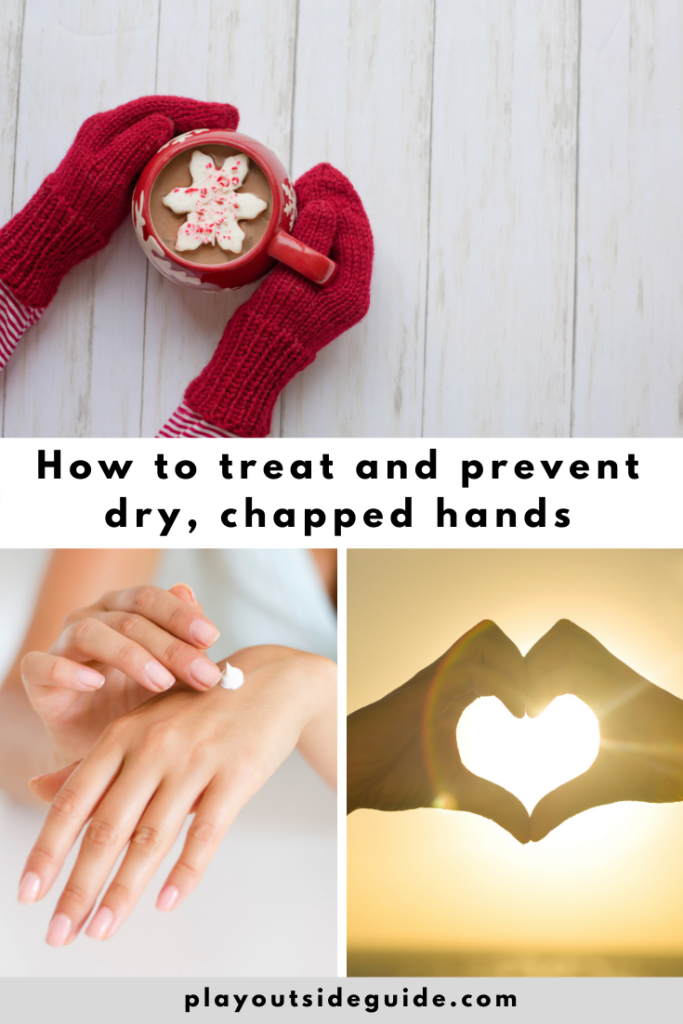
Related Posts
- Surviving Winter with Raynaud’s (Tips for Keeping Hands and Feet Warm)
- The Best Winter Gear for Kids
- 2022 Holiday Gift Guide for Outdoor Adventurers
- 2022 Holiday Gift Guide for Outdoor Kids


